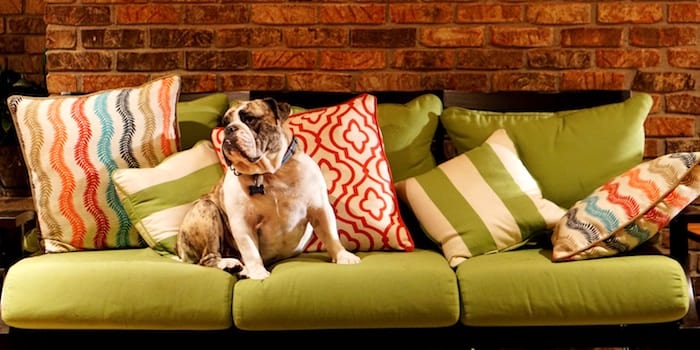
No one like stains on their upholstery, especially when they can’t easily be hidden by flipping over a couch cushion. Unfortunately spills are simply a part of life. But when accidents do happen, how do you clean them out of your upholstery by yourself?
Follow these step by step instructions for getting stains out of your upholstery. If you need to skip to a step, click on the step you need to automatically jump to it. We also offer some simple DIY recipes for leather, and fabric and synthetic upholstery cleaners.
Table of Contents:
**Click to auto scroll by section
How to Clean Upholstery Yourself
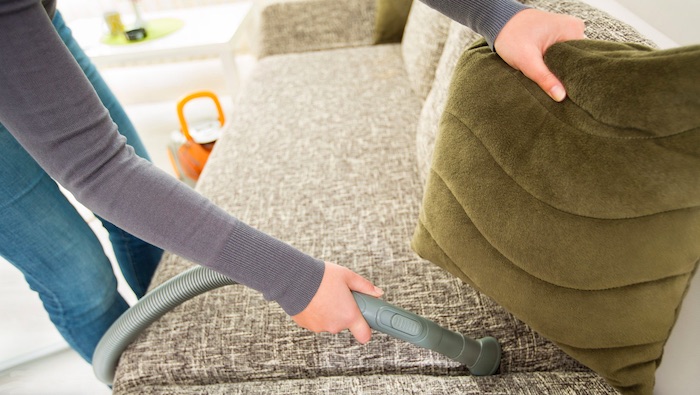
1. Vacuum upholstery
Upholstered furniture should be vacuumed regularly. Dirt doesn’t only affect the appearance of your sectional or loveseat – it can actually wear away upholstery fibers.
Vacuuming your sofa or club chair is your first defense against stains. You’d be surprised how much a simple vacuuming can help to fade even the most set-in stains.
Furniture too dirty to clean? Get it gone!Learn More ❯
Use a clean, dry upholstery attachment or a stiff-bristle brush to loosen dried dirt, dust, and crumbs. Once you have vacuumed the high-traffic surfaces, use the crevice tool for hard-to-reach spots like between the cushions. Pet hair is especially good at getting lodged in couch crevices, so if you have pets, pay extra attention to this step.
Vacuum cleaner bite the dust? Learn more about our vacuum cleaner removal services.
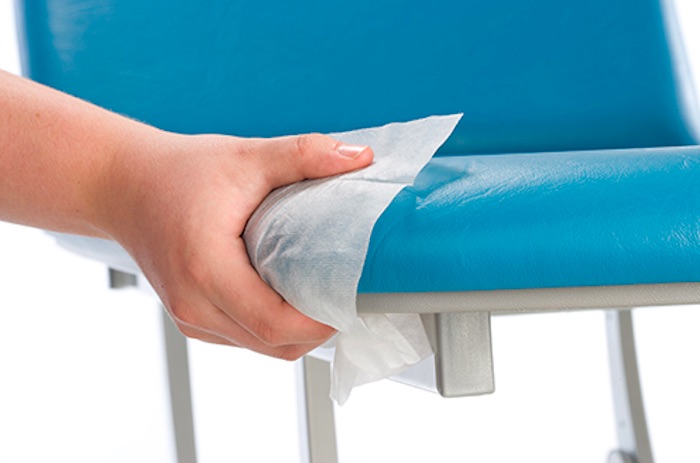
2. Clean metal and wood areas
Since you’re already going to be cleaning your couch or other upholstered furniture, now is a good time to also clean the non-upholstered parts.
Wipe down the furniture’s feet and any other non-fabric parts using a solution of mild liquid dish soap and warm water. Make sure you only use a drop or two of soap so that the solution doesn’t leave a film on your wood or metal surfaces.
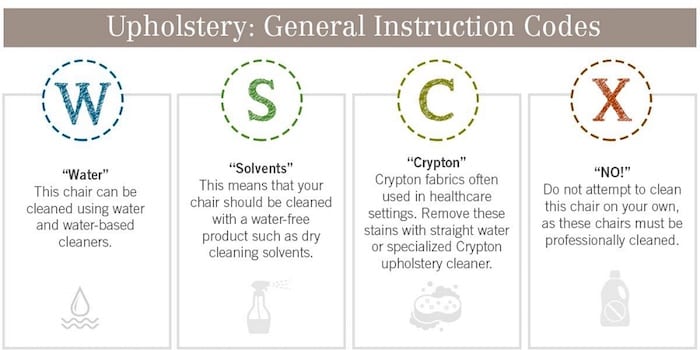
3. Check care instructions
Now that you’ve vacuumed, you’re ready to start cleaning. The type of solution you use to clean your upholstered furniture depends on the type of fabric they’re made with.
Check your couch or recliner for cleaning codes. These are small symbols that can usually be found on a tag or label that’s been sewn in at an inconspicuous spot. If your couch has cushions, it may be underneath those. If not, check underneath the couch. The label is most likely sewn into one of the seams.
Some upholstery can be cleaned with water, other types will require a multi-step process with various solvents. You also can use a homemade cleaning solution based on what type of upholstery you’re trying to clean.

4. Test water and solution on fabric
If you can’t find your furniture’s cleaning code or it doesn’t have one (this is often the case with vintage and antique furniture), start by doing a spot test on a hidden piece of fabric.
Spot testing does add a little time to cleaning, but it’s important to test anything you plan to use when cleaning the upholstery, including water.
Make sure your test spots have dried completely and haven’t changed the look or feel of the upholstery before using whatever you tested on the rest of the couch or ottoman.
Want eco-friendly couch disposal?Check out our services! ❯
Always spot test any piece of upholstered furniture first before cleaning it. A cleaning product that works like magic on your vintage sofa could bleach out your spouse’s favorite chair.

5. Choose the right cleaning solution
Try a specially formulated dry solvent or spot remover first. If your furniture can be cleaned with water, start with a little carbonated water. Gently dab the upholstery with the cleaning solution of your choice using a clean, soft cloth.
You can also make your own solution in a spray bottle using every day items from your kitchen! Here are some recipes for DIY cleaning solutions based on fabric type:
- Leather. Mix 1/2c olive oil with 1/4c vinegar. Spray across surface of couch. Gently buff area in a circular motion with a soft cloth until clean.
- Fabric. Mix 3/4c warm water, 1/4c vinegar and 1 tablespoon of mild dish soap in your spray bottle. Mist the stained or soiled area until wet, but not soaked. Scrub the spot with a soft cloth until it lifts away. Once the stain appears to be gone, lightly moisten a second cloth with clean water and wipe away excess soap. Towel dry.
- Synthetic. Mix 1c warm water, 1/2c vinegar and 1/2 tablespoon liquid dish soap. Mist stained area and scrub with a soft cloth until stain disappears.
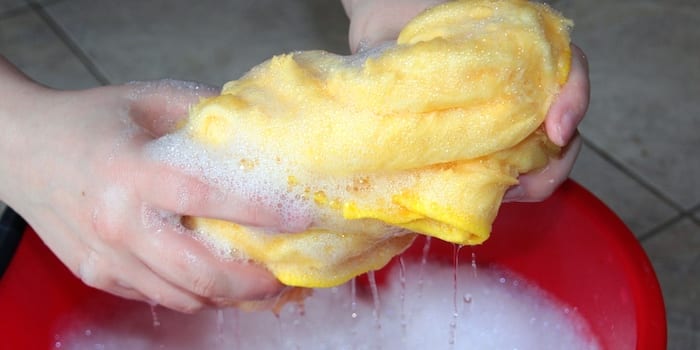
6. Spot clean any stains
A word of caution, here. Please do not rub or scrub the fabric when cleaning and drying. It can be tempting, especially with tough stains, but doing so will actually grind the stain further into the fibers and damage the upholstery.
Old sectional need to go? Find zero-contact removal ❯
Cleaning couch cushions
Sometimes your entire couch isn’t dirty, but the cushions are a biological nightmare. Whether you’re cleaning up your entire home for the holidays, or just touching things up, cleaning your couch cushions is a pretty simple part of the process. Luckily, most couch cushions have zip-off covers, making them fairly simple to clean.
Be sure to follow the care instructions for washing your cushion covers in your washing machine. However, if your couch cushions don’t have removable covers, don’t sweat! Follow the steps in this blog and clean them the same way you have cleaned the rest of your couch.
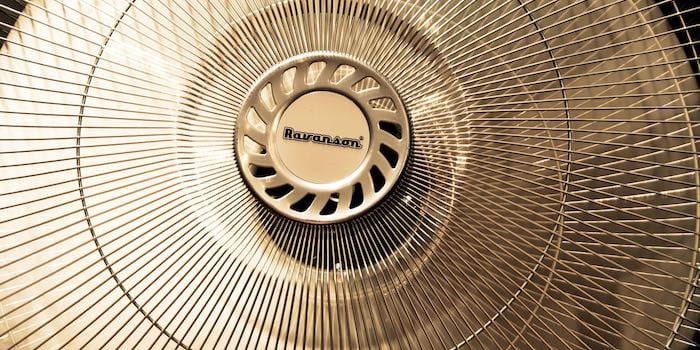
7. Let furniture dry
Blot your upholstery dry with a soft, clean, absorbent cloth or towel. Try to get everything as dry as possible by blotting (Remember: No scrubbing!) Be sure to dry any cushions or throw pillows thoroughly, as leaving them damp can lead to mold.
Even if you used very little liquid, it’s a good idea to bring a fan in and aim it at the area you were just cleaning. You can also use a hairdryer, as long as you set it to the lowest heat setting. Make sure not to keep it pointed at the same spot for too long to avoid burning the fabric.
If the cleaned upholstery fabric feels stiff after drying, use a soft brush to gently loosen the fibers. If you cleaned with vinegar or vodka, the smell should go away once the fabric is dry.
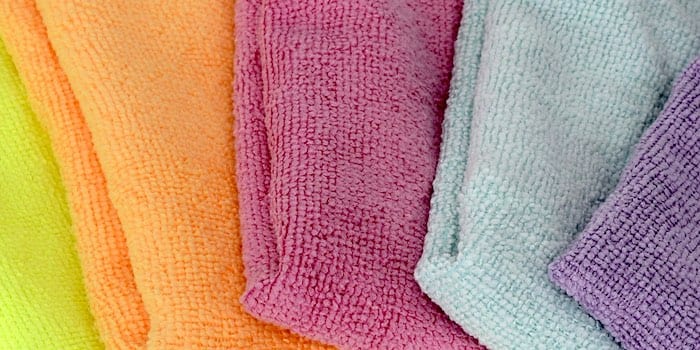
8. Check your work
If any dirt or stain has stuck around through the cleaning process, you’re looking at a second round of stain removal. As exhausting and annoying as the process can be, doing it all over again can get your couch or ottoman looking the way you want. After all, who doesn’t love a clean home, upholstery and all?
It could take two or three full passes before set-in stains come out. You’ll probably find yourself thinking there’s no way those stains are ever going away, but remember that perseverance usually pays off.
What to Do When You Can’t Get a Stain Out
If your upholstered sofa or recliner just won’t come clean or it’s too much to deal with, you could try having it reupholstered. If you’re handy with a needle and thread, you may want to try doing it yourself.
The drawback here is that it can be rather expensive to have a piece of furniture reupholstered. Professional Reupholstery can easily cost just as much, if not more, as purchasing a new sofa or loveseat.
Even if you decide to try your hand at recovering the piece, the cost of fabric and materials will quickly add up. You’ll need at least 15 yards of fabric to reupholster a standard couch and at least 6 yards for a typical chair.
Upholstery fabric usually costs around $35 a yard, and if you’d like something a little more on-trend and stylish, you’ll be looking at a minimum of about $70 per yard.
Once you add the cost of any foam or padding, upholstery thread, upholstery needles, plus any embellishments or other notions and equipment, you can expect to spend anywhere from $200 – $2k on your DIY Reupholstery Project.
🛋 Unless you’re just absolutely in love with the shape and framing of your chair or loveseat, you probably ought to consider cutting your losses and replacing it with a new piece of furniture.
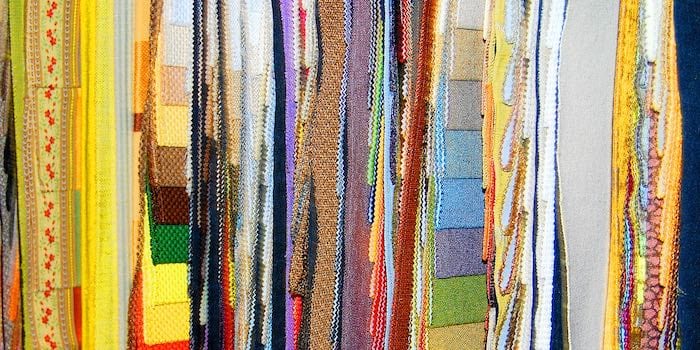
Replacing and Removing Stained Furniture
When replacing your upholstered furniture, you’ll also need to consider how you’re going to get rid of the old furniture. You’d probably prefer not to throw it away since an old sofa or recliner will cause environmental damage in a landfill.
You may be able to donate your used sectional or upholstered chair to your local charity. However, if stained or damaged, charities near you may not accept your furniture donation.
This can be quite frustrating, especially since the whole reason you decided to replace your upholstered furniture in the first place was to save money, time, and effort.
The best way to save yourself the hassle of getting rid of your old sleeper sofa or recliner is to use a furniture removal service like LoadUp to handle the task for you.
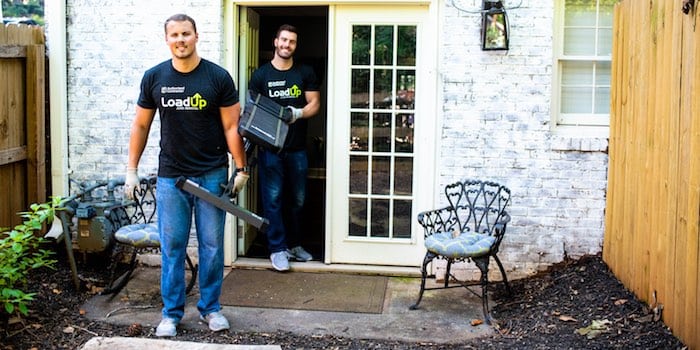
Furniture Pickup & Disposal Services
LoadUp will pick up and haul away any number of upholstered furniture items or other junk you have, with no minimum fee. Most other junk removal services refuse to take just one item unless you pay for a full truckload.
Unlike other junk removal companies, LoadUp offers honest, upfront pricing and next-day pickup when you book your furniture removal service with them.
At LoadUp, our nationwide junk removal professionals are fully background-checked and are completely insured for any accidental damage to your property under a minimum $1 million policy. This way you know you’re getting upholstered furniture removal you can trust.
Because LoadUp believes that honest customer feedback is the best marker for success, after your furniture has been picked up you’ll receive an email from LoadUp with a link to rate and review the service you received.
Best of all, LoadUp offers furniture pickup and removal near you at a price that’s 20-30% lower than what most other furniture removal companies charge.
Related Articles from the Trash Talk blog:

